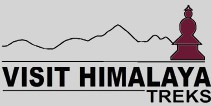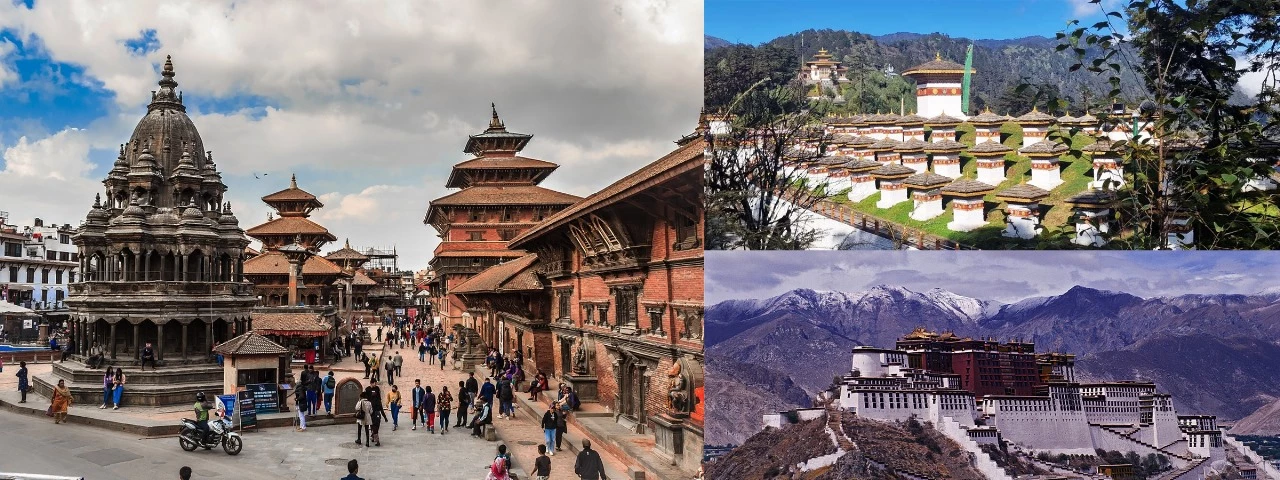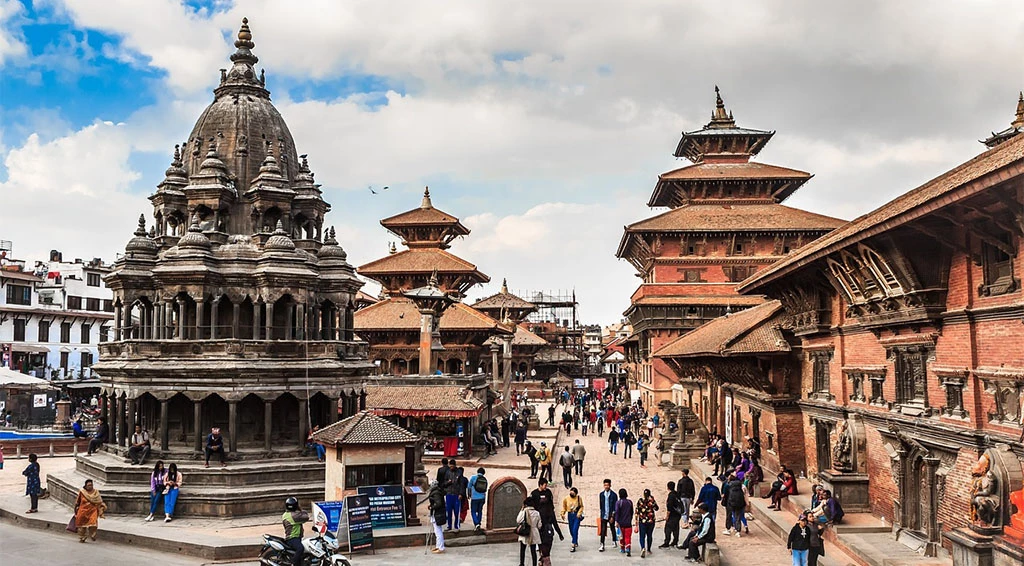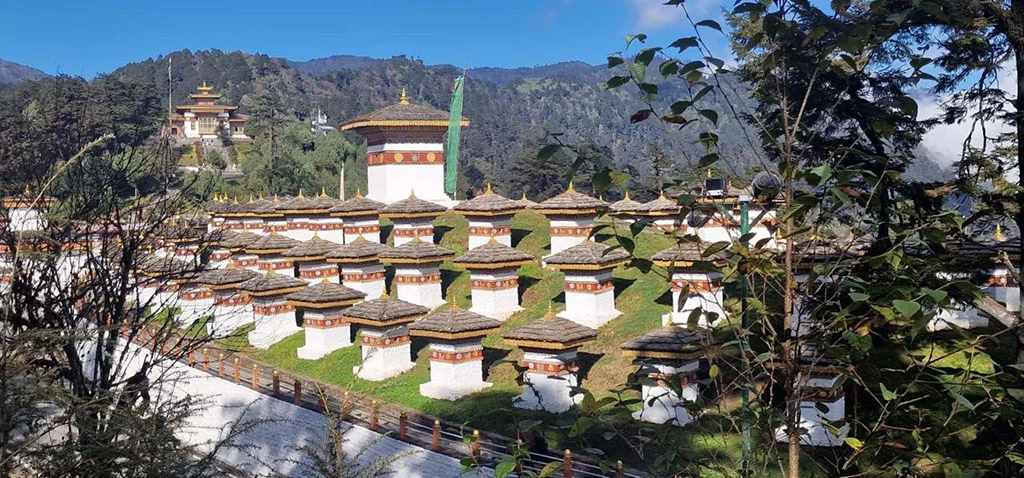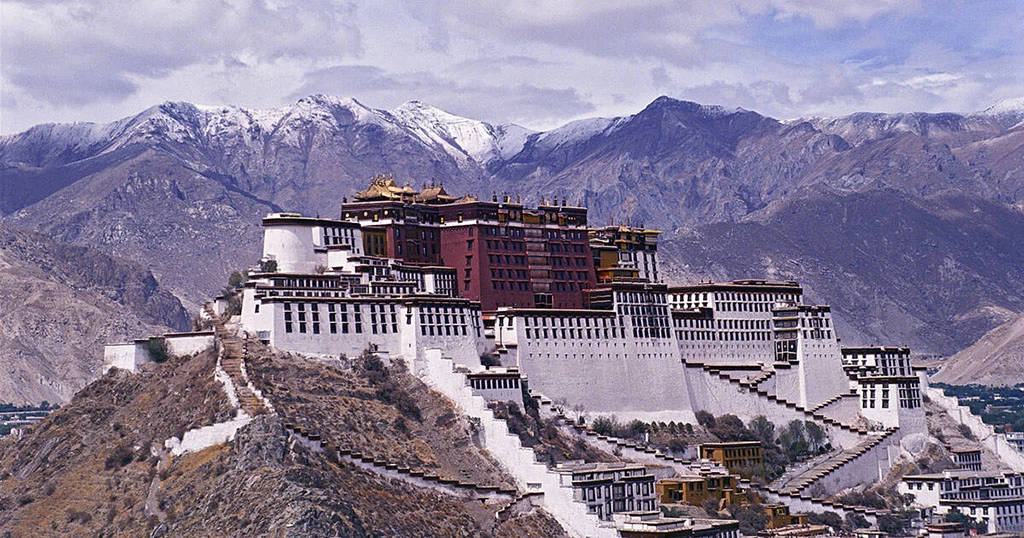Take an iconic tour to Nepal, Bhutan, and Tibet, where rich spiritual legacy, stunning scenery, and age-old customs coexist. With this well-designed excursion, you'll venture deep into the Himalayas and have the unique chance to see three of the most mysterious places on earth.
Each location provides a unique peek into ancient cultures, from the colorful temples and towering mountains of Nepal to the unspoiled monasteries of Bhutan and the magnificent spiritual headquarters of Tibet. This adventure of Nepal, Bhutan, and Tibet Tour offers an unforgettable combination of peacefulness cultural learning, and stunning landscapes.
Introduction to the Nepal, Bhutan, and Tibet Tour.
This exceptional travel package of Nepal, Bhutan, and Tibet Tour offers a once-in-a-lifetime chance to fully immerse oneself in the outstanding spirituality, natural beauty, and cultural richness of these locations. With its doorway into the Himalayas' soul, each location reveals a different story of long-standing customs, beautiful surroundings, and profound spiritual meaning. Known as the "Roof of the World," Nepal is a haven for travelers and a spiritual haven for seekers of knowledge.
Nepal is a country of magnificent scenery and revered locations, and it is home to Mount Everest and the birthplace of Lord Buddha. Its bustling towns like Kathmandu, where ancient temples mingle with modern energy, and its peaceful isolated villages that provide serenity and a sense of being in one with nature, drive visitors to the region.
As you cross into Bhutan, you come to a place where pleasure is inherent in every aspect of everyday existence. Referred to as the "Land of the Thunder Dragon," Bhutan is a small but culturally rich nation that defines its success by Gross National Happiness rather than GDP growth. Bhutan's majestic cliffside monasteries, including the well-known Tiger's Nest, and its dedication to protecting its pristine natural surroundings make it a destination for anybody looking for a closer spiritual connection to the natural world.
Tibet's plateau is known as the "Roof of the World" considering its altitude and spiritual significance. Tibet is well-known for its mysterious monasteries and the magnificent Potala Palace in Lhasa. It offers visitors a rare opportunity to see one of the world's most spiritual areas, where Buddhism influences every aspect of everyday life. This unique combination of Nepal, Bhutan, and Tibet Tour in one trip provides an amazing experience for anyone seeking to discover the Himalayas in all of their facets, from spiritual to picturesque.
The Spiritual and Cultural Essence of Nepal.
As part of the Nepal, Bhutan, and Tibet Tour, Nepal provides a fascinating glimpse into the spiritual and cultural core of the Himalayas. Nestled in the towering peaks of the world's highest mountains, Nepal is a nation of ancient traditions and natural beauty. It is home to several ethnic communities, colorful festivals, and ancient temples, each of which contributes something special to the nation's rich cultural element.
Rich Cultural Heritage of Nepal.
Experience the cultural treasures of the Himalayas with the Nepal, Bhutan, and Tibet Tour, where Nepal is particularly noteworthy for its diverse and rich history. One of the most culturally diverse nations in Asia, Nepal has a rich history and is an intersection of ethnic groups, languages, and customs. Nepal's cultural environment is as diverse as its geographical location, ranging from the historic Newari architecture of the Kathmandu Valley to the renowned Buddhist and Hindu temples spread throughout the country. It's common to refer to Nepal's capital, Kathmandu, as a living museum.
Travelers may get an inside glimpse into centuries-old customs at places like Swayambhunath (the Monkey Temple), Pashupatinath Temple, and the Kathmandu Durbar Square, which are all UNESCO World Heritage Sites. Nepal's distinctive spiritual environment originates from the combination of Buddhism and Hinduism, which is prominent in both massive festivals and daily rituals. Nepal's remote communities, often nestled away in the Himalayan shadows, preserve centuries-old practices. Visitors may enjoy traditional Nepali hospitality, music, dancing, and craft-making, which adds a personal touch to their tour.
Bhutan: The Land of the Thunder Dragon.
As the final Himalayan monarchy, Bhutan is exceptional on the Nepal, Bhutan, and Tibet tours. This remote nation has managed to maintain a peaceful balance between modern progress and spiritual legacy for thousands of years by preserving its rich culture and old customs. Bhutan is a popular travel destination with its serene monasteries, stunning scenery, and dedication to Gross National Happiness. Bhutan provides a close-up view of a lifestyle immersed in Buddhism, where the natural world is flawless and cultural values are extremely significant.
Monasteries and Dzongs of Bhutan.
The Nepal, Bhutan, and Tibet Tour provides a fascinating look at Bhutan's magnificent monasteries and Dzongs, which serve as the kingdom's cultural and spiritual icons. Renowned for being the Tiger's Nest Monastery, Paro Taktsang is perched on a cliff and offers amazing vistas along with deep spiritual significance. The historically significant Punakha Dzong, which is hidden between two rivers, is a prime example of Bhutan's brilliant architecture.
The Tashichho Dzong in Thimphu and the Rinpung Dzong in Paro both showcase Bhutan's distinctive fusion of administration and religion. These holy locations represent Bhutan's profound Buddhist traditions and provide serene retreats for visitors. It is possible to get an insight into Bhutanese spirituality and observe the country's commitment to maintaining its cultural legacy in the face of fast globalization by visiting these remarkable landmarks while on the Nepal, Bhutan, and Tibet Tour.
Traditional Festivals of Bhutan.
The Nepal, Bhutan, and Tibet Tour offers travelers to witness Bhutan's vivid traditional festivals, which play an important part in conserving the country's rich cultural legacy. The most famous is the Paro Tsechu, which takes place in Paro Dzong every year. This holy festival which attracts both residents and visitors, honors the life of Guru Rinpoche with vibrant mask dances. Another important celebration is Thimphu Tsechu, which takes place in the capital of Bhutan.
During this festival, civilians and monks carry out spiritual ceremonies to call out blessings and protect the country from evilness. These celebrations are not only spiritual but also representative of Bhutan's deeply rooted Buddhist beliefs. People get together in expensive traditional clothing to enhance social connections and honor their religious heritage. These celebrations provide travelers on the Nepal, Bhutan, and Tibet Tour a unique chance to see Bhutan's spiritual enthusiasm, vibrant culture, and joyous celebration of its ancient traditions.
Explore the Natural Beauty of Bhutan.
Nepal, Bhutan, and Tibet Tour highlights Bhutan's amazing natural splendor, which has been virtually unaffected by modern civilization. The verdant valleys, majestic hills, and pristine rivers provide an idyllic atmosphere for exploring. Offering stunning vistas and a peaceful atmosphere. Nature enthusiasts can not miss Punakha Valley, which has incredible scenery and verdant rice fields. In fine weather, Dochula Pass offers panoramic vistas of the Himalayas. For those who love the outdoors, Bhutan is the ideal vacation spot because of its well-liked locations and pristine surroundings.
Discover the Magical Vibrance of Tibet.
As part of the Touring Nepal, Bhutan, and Tibet itinerary, exploring Tibet is a wonderful opportunity. With its high altitudes and ancient religious legacy, Tibet is renowned for its natural beauty and spiritual essence. The picturesque Mount Kailash, admired by Buddhists and Hindus alike, attracts people from all over the world. The profundity of Tibetan Buddhism is demonstrated by renowned monasteries like Lhasa's Sera Monastery and Jokhang Temple. Explore Tibet's tranquil landscapes, holy places, and centuries-old rich cultural traditions on this tour—it's an experience like no other.
Majestic Peaks and Monasteries.
Tibet is home to some of the world's most majestic peaks and sacred monasteries. Standing majestically near the border with Nepal, the beautiful Mount Everest looms over the land. For Buddhists, Hindus, and Jains alike, Mount Kailash is an equally significant place. These summits attract both explorers and pilgrims looking for deeper connections with nature and religion. Equally famous are Tibet's monasteries. The Tibetan Buddhist religion is said to have its spiritual center at the Jokhang Temple in Lhasa.
The former Dalai Lama's home, Potala Palace, is a symbol of Tibetan identity. Sera Monastery and Drepung Monastery are important Buddhist study and practice sites. All these locations are of great religious significance and serve as examples of Tibet's rich cultural legacy. These peaks and monasteries provide the ideal combination of natural amazement and spiritual discovery in this high-altitude wonderland and are part of an itinerary that takes travelers through Nepal, Bhutan, and Tibet Tour.
Tradition and Culture in Tibet.
Buddhism is at the heart of Tibetan tradition and culture, which influences all aspects of daily life. As centers of culture and spirituality, monasteries are essential. Religious activities are celebrated with prayers, dances, and offerings during festivals like Saga Dawa and Losar, which mark the start of the Tibetan New Year. Tibetan art, such as thangka painting expresses their spiritual beliefs. The old nomadic lifestyle is still followed in rural regions, where yak herding and crafting are typical activities. A tour of Nepal, Bhutan, and Tibet provides an exceptional opportunity to see these long-lasting customs, where everyday life and spirituality are still closely connected.
Best Seasons for Nepal, Bhutan, and Tibet Tour.
A Nepal, Bhutan, and Tibet Tour combines culture, spirituality, and stunning scenery. To get the most out of this adventure, you must select the ideal season. Every season offers something different, from colorful celebrations and unobstructed views of the mountains to peaceful, less-traveled adventures.
Spring (March-May)
Spring is an excellent pick to embark on the Nepal, Bhutan, and Tibet Tour. In Nepal, blossoming rhododendrons provide color to the landscape. The valleys of Bhutan are a riot of color and festivity. Tibet has pleasant weather and bright skies, making it the perfect place to visit monasteries and take in the views of the mountains. This season highlights the region's natural and cultural attractiveness at its peak.
Summer (June-August)
Monsoon season in Nepal and Bhutan begins in the summer. But Tibet is a great getaway due to its dry climate and high altitude. Trekking in Tibet and Nepal's highlands is fantastic during this time of year. Bhutan's valleys are lush and green although rain can interfere with certain outdoor activities. Summertime tour to Tibet, Nepal, and Bhutan offer adventure and fewer visitors.
Autumn (September-November)
Autumn is the most popular season for Nepal, Bhutan, and Tibet Tour. Nepal's bright sky and comfortable temperatures are excellent for trekking and sightseeing. Bhutan's landscapes shine beneath the autumn sun, and celebrations fill the air with joy. This time of year in Tibet is perfect for exploring the local cultures since it offers amazing perspectives of the mountains and monasteries.
Winter (December-February)
Winter offers a calmer, relaxing experience on the Nepal, Bhutan, and Tibet Tour. The weather is favorable for trekking in the lower areas of Nepal. While the lower valleys are easily accessible and serene, Bhutan's mountains are sometimes cold. The highlands of Tibet are extremely cold, yet Lhasa is still open and has fewer tourists than other cities, making it a special chance to learn about Tibetan culture in peace.
Transportation on Nepal Bhutan and Tibet Tour.
The Nepal, Bhutan, and Tibet Tour provides travelers with an incredible experience throughout three of the world's most picturesque and spiritually vibrant places. To guarantee a smooth and enjoyable vacation, navigating these challenging areas demands careful preparation and teamwork. A major component of the tour is travel and transportation, including activities like picturesque drives across mountain passes and breathtaking flights over the Himalayas. It will be easier to travel and concentrate on the incredible landscapes and diverse cultures of each location.
Flights and Fares.
During the Nepal, Bhutan, and Tibet Tour, airplanes are the principal form of transportation between countries. There are only 3 flights a week to Lhasa from Kathmandu Lhasa to Kathmandu, and Kathmandu to Bhutan Paro, which is a regular flight. The cost of one-way flights varies depending on the season. With stunning views of the Himalayas, the flight is just as amazing as the destination on these flights. Making reservations in advance is essential, particularly during busy times of the year.
Local Transportation and Vehicle Options.
It is preferable to travel in private cars within each area whilst on the Nepal, Bhutan, and Tibet Tour. Depending on the number of people traveling, cozy Car, Van, minibusses, Bus are frequently used. These vehicles are perfect for taking beautiful rides and exploring rough terrain. The roads of Bhutan are in great condition, but driving across hilly regions of Nepal and Tibet can be adventurous. Local drivers, who are knowledgeable about navigating these areas, make sure that the drive is easy and safe so that visitors can concentrate on taking in the spectacular view.
Accommodation and Meals on Nepal Tibet and Bhutan Tour.
The adventure of Nepal Bhutan and Tibet provides an extensive adventure that includes tasty meals and comfortable accommodations along the way. Travelers will experience comfort and taste at every destination, from small local restaurants to luxury resorts, along with a choice of local and foreign meals.
Accommodation.
A range of choices for accommodation are available to meet a range of preferences on the Nepal, Bhutan, and Tibet tours. Most of our itinerary includes comfortable 4* stander accommodation while on a trip to Nepal, Bhutan, and Tibet. To provide a comfortable stay in every location, the majority of hotels on the tour offer modern amenities like Wi-Fi, hot showers, and comfortable beds.
Meals.
Breakfast, lunch, and dinner are all included in the Bhutan, and Breakfast only provides Nepal and Tibet Tour, which includes a delicious fusion of regional and foreign cuisines. You may enjoy local specialties like momos (dumplings), dal bhat (lentils and rice), and a range of curries in Nepal. Bhutan offers its well-known butter tea, red rice, and ema datshi (chili and cheese). Tibetan cuisine frequently consists of yak meat, barley flour, and thukpa (noodle soup). Breakfast is usually served in hotels.
Permits and Entry Requirements for Nepal, Bhutan, and Tibet Tour.
It's crucial to understand the distinctive permits and entrance procedures for each location before starting the Nepal, Bhutan, and Tibet Tour. Visit Himalaya Treks will arrange all necessary arrangements for Nepal, Bhutan, and Tibet as per the itinerary hassle-free and efficient tour of these Himalayan regions.
Sustainable Tourism and Cultural Protocol.
In Nepal, Bhutan, and Tibet, sustainable tourism is essential to maintaining sensitive ecosystems and a rich cultural legacy. It is recommended that visitors respect the environment by reducing their trash, avoiding plastic, and booking environmentally friendly accommodations. To avoid damaging the ecosystem, trekking and exploration should only be done on approved routes, especially in national parks and other protected regions. It is also important to follow cultural protocols.
Traditions and religious observances are highly valued in Tibet, Bhutan, and Nepal. When visiting monasteries and temples, visitors should wear respectful clothing, get permission before taking pictures of the locals or religious structures, and avoid touching anything valuable. Bhutan has tight regulations in place to protect its cultural heritage, such as mandating that tourists interact with native guides. Travelers may help preserve these Himalayan regions' natural beauty and cultural value by following sustainable tourism practices and showing respect for cultural traditions. This will ensure that these areas stay pristine for future generations.
Wonderful Nepal, Bhutan, and Tibet Tour Itinerary.
Day 01: Arrival at KTM Airport, receive at KTM airport, and transfer to hotel stay overnight at Hotel KTM. (1350 meters)
Day 02: Arrive at Paro, receive at the Airport, and transfer to Thimphu 55 KM about 2 hour's drive stay at Thimphu at Hotel.
Day 03: After breakfast, sightseeing in Thimphu.
Day 04: Drive from Thimphu to Punakha (75 km) at about 3:30 hours.
Day 05: After Breakfast drive to Paro about 120 Kilometers about 5 Hours.
Day 06: Exploration day atTaktshang Monastery or Tiger’s Nest.
Day 07: After Breakfast drive to the Airport for departure to KTM Nepal.
Day 08: After Breakfast, Full day sightseeing in the KTM World Heritage site, with a Historical City Guide, and stay overnight at Kathmandu Hotel. (1350 meters)
Day 09: Full-day sightseeing stays overnight at Nagarkot. (2100 meters.
Day 10: Nagarkot - Pokhara drive and stay overnight at Pokhara. (822 meters).
Day 11: Sightseeing in Pokhara, Late afternoon boating at Fewa Lake stay overnight at Pokhara at Hotel. (822 meters)
Day 12: Sarangkot View Point and drive to Chitwan National Park. (415 meters)
Day 13: Full-day Activities in Chitwan National Park. (415 meters).
Day 14: After Breakfast, Drive back to Kathmandu. (1350 meters).
Day 15: Fly Kathmandu to Lhasa, receive at the Airport, and transfer to hotel stay overnight at Lhasa Hotel.
Day 16: Lhasa city sightseeing Potala palace, Jokhang temple, Barkhor street Lhasa stay overnight at Hotel.
Day 17: Lhasa city sightseeing Drepung & Sera monastery Norbulinka stay overnight at Lhasa Hotel.
Day 18: Lhasa-Yamdrok Tso Lake - Lhasa day overland tour back to Lhasa stay overnight at hotel.
Day 19: After Breakfast Departure – Lhasa - Kathmandu.
Day 20: Free day at Kathmandu, Last Minutes shopping, Self-free day, "Enjoy an evening cultural dinner at a typical Nepali restaurant in Kathmandu and stay overnight at Kathmandu Hotel.
Day 21: Departure. (1350 meters) After Breakfast, transfer to the Airport for Departure.
